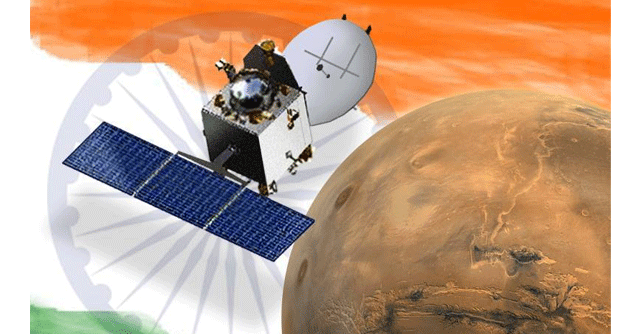
Mangalyaan: What happens when a space orbiter’s mission ends?


India’s Mars Orbiter Mission, known colloquially as Mangalyaan, has reportedly run out of fuel. According to a report by Press Trust of India, senior officials of the Indian Space Research Organisation (ISRO) confirmed that Mangalyaan’s cells can no longer function since they have run out of power. While the ISRO is yet to issue a statement on the end of Mangalyaan’s life cycle, here’s looking at what may happen to India’s maiden Mars mission at the end of its life.
What will happen immediately after Mangalyaan runs out of power?
If the report holds true, the space probe that was designed to study Mars from its orbit will no longer communicate with Earth stations at ISRO or make any observations, and its scientific equipment will shut down due to the lack of a power source. Many spacecraft are often designed with solar panels to sustain operations for a longer time span than the intended research period. For instance, the James Webb Telescope, which was sent into space by American space agency NASA earlier this year, uses solar panels for generating power.

The Mangalyaan orbiter has already achieved that, with its cells extending the life cycle of the mission from an intended period of six months — to over eight years.
What control do scientists have in the spacecraft’s shutdown process?
The team of scientists tasked with communicating and maintaining any spacecraft, such as the Mars Orbiter, would have had weeks to prepare the shutdown process of the mission. Typically, the team of scientists use this shutdown process to figure out how the rover will come to an end.

What are the courses of this shutdown process?
Typically, there are two processes that scientists follow. The first involves planning a slow fly-down of an orbiter into a planet’s atmosphere or surface. In other words, a spacecraft typically requires a power source to propel itself away from the planet or object it orbits, which typically draws orbiting objects towards it due to gravitational forces.
Once this power source is exhausted, the orbiting object no longer has the power to repel gravity. Hence, it slowly drifts towards the central planet’s surface.

In Earth’s case, where the atmosphere is dense, these orbiting objects typically burn up in the atmosphere when entering it, and are therefore destroyed before they reach the surface. In other cases, such as the iconic ‘Cassini’ probe that orbited Saturn from June 2004 to September 2017, the National Aeronautics and Space Administration (NASA) used this strategy to crash Cassini into Saturn — where the spacecraft disappeared into the gaseous planet’s depths after being decommissioned.
Can spacecrafts live on even after the end?
Yes, when they are pushed into a trajectory to drift away from Earth. The most notable case of such an instance has been seen with NASA’s legendary Voyager I and Voyager II missions. After the two probes completed their missions of crossing the orbits of Jupiter, Saturn, Uranus and Neptune, NASA sent the two probes off in an infinite driftaway trajectory.

As a result, this has led to Voyager I becoming the farthest human made object in outer space — since it today travels in interstellar space (the region of space away from our solar system) at a distance of over 157 times the distance between Earth and the Sun.
Why can the missions be brought back to Earth?
The primary obstacle would be the cost and logistical difficulty in doing that. For instance, it would add a tremendous amount of cost to move India’s Mars Orbiter away from the Red Planet and bring it back to Earth. Given that the spacecraft has fulfilled its sanctioned mission and budget, there is no quantifiable return that such a craft would give — since it would not be reusable in any nature.

